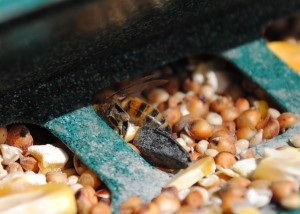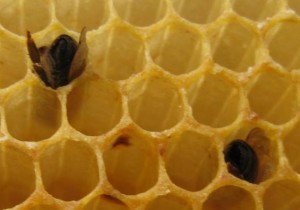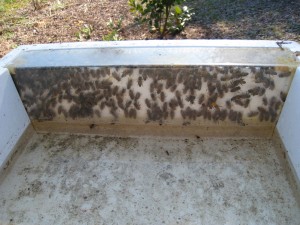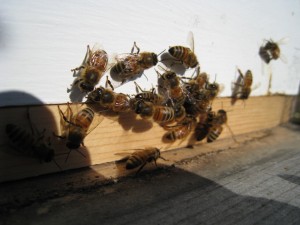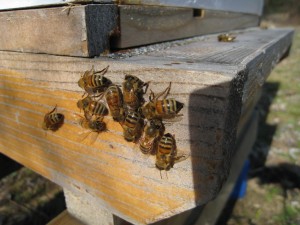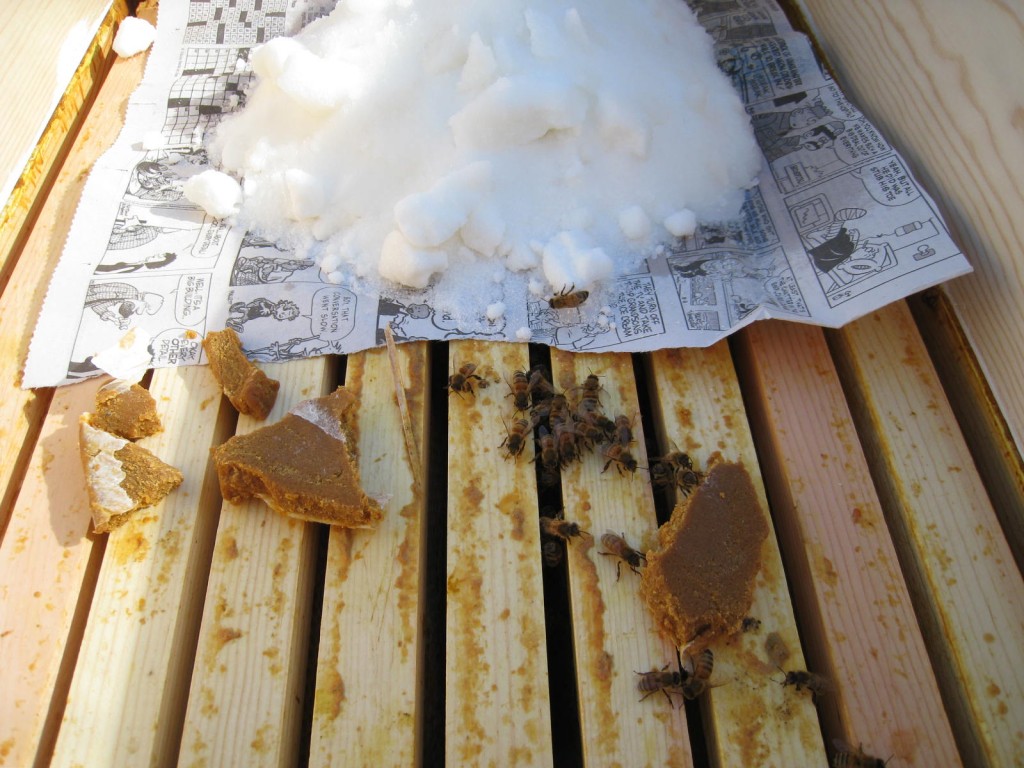Let’s Experiment
Last Spring, there was a lot of consternation about slow build up. Of course, this was only on my part, as the bees went about their business with no worries whatsoever. Basically, both of my hives were building up at about the same pace, but I had spoken to (or emailed) other beekeepers in the area that were seeing more mass (more bees in their hives.)
During one such conversation, back in the Spring of 2010, a beekeeper from Buckingham mentioned that some folks in his neck of the woods would put light syrup on their hives in February to give the hives a jump start. The general theory is that you put a weak sugar-water solution (1 part Sugar to 2 or 3 parts water) on the hives. This makes the bees think that the nectar flow has started and they begin to ‘build up’ (a term that basically means the Queen starts to lay a bunch of eggs). By the time the real nectar flow starts, they will have a TON of bees and really be able to sock away the honey.
Since last Spring, I ran into a wizened beekeeper from yesteryear who put out buckets of syrup water in his apiary to get an early build up. As always, I am fascinated by simple approaches and decided to give it a whirl in one of my outwards.
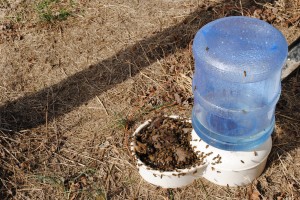
I mixed up a batch of weak sugar syrup (10 lbs Sugar, 3 Gallons Water) and poured it into one of my old dog waterers. On Sunday, around 11 am, I placed it in a central area between the hives (it was as much as 40 yards from two of the hives and 30 yards from the other three). By late afternoon (right before I went to watch the Steeler’s get a whooping- booyah!), the bees had found it and were on it pretty thick. During lunch today, I checked in on them around noon and they were really putting the stuff down.
It will be interesting to see how this works. I am pretty sure that I never even considered feeding from outside of the hive (now or in the Summer) as I did not want to feed the feral bees. Now, I am having second thoughts. This was very easy and it did not cause any robbing (like it does, on occasion in late Summer, when the syrup is placed within one hive.) I may not ever feed in the Winter again (we’ll see how it goes with this experiment), but I will most definitely feed outside again (until such time as I figure out a good reason not to.)
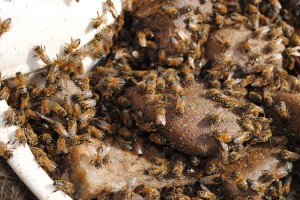
I actually checked one of the hives and it appeared that they were storing it around the brood nest. I am torn about this behavior. I have a gut feeling (no evidence) that honey from real nectar is much better then my sugar syrup (even if I do have Better Bee in it.) This is the roughest time of the year for a bee, so why give her second rate food (assuming there is a difference between nectar and syrup)? But, on the other hand, it gives me a bit of comfort to know that they are socking away some stores exactly where they’ll need it if (quite honestly, I should say when) it gets cold again (at the edges of the cluster.) But, on the other other hand (is that three hands?), are they filling up cells that the queen might want to lay in? Ha! Who knows. The bees know and that’s all that matters.
Finally, I also put pollen patties on each of the hives in this yard (if brood rearing is going to ramp up, they are going to need some pollen! – well, they may need it if they were lazy last Fall and didn’t put enough away!) This brings me to my last observation for today – protein from the bird feeder! I had heard of it, but had never seen it. Folks have said that bees will sometimes scour bird seed, looking for a few bits of protein in the stray pollen. This past Friday, I found one of my bees (well, a bee in my yard anyway) doing just that! She was running in and out of the feeder, filling her legs up with some dust substance (which was pollen, no doubt – probably not the best, but still worth collecting in her mind.)
